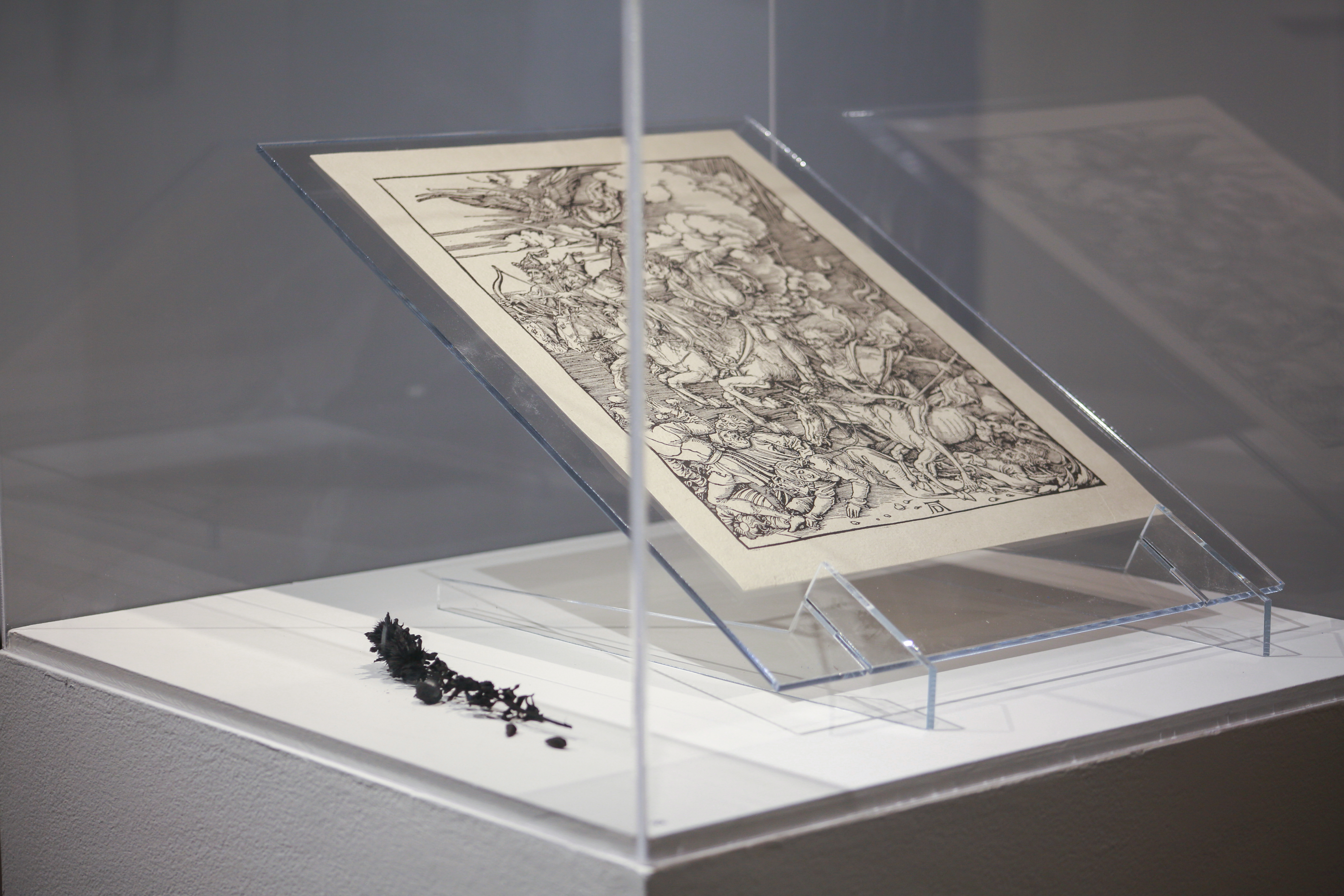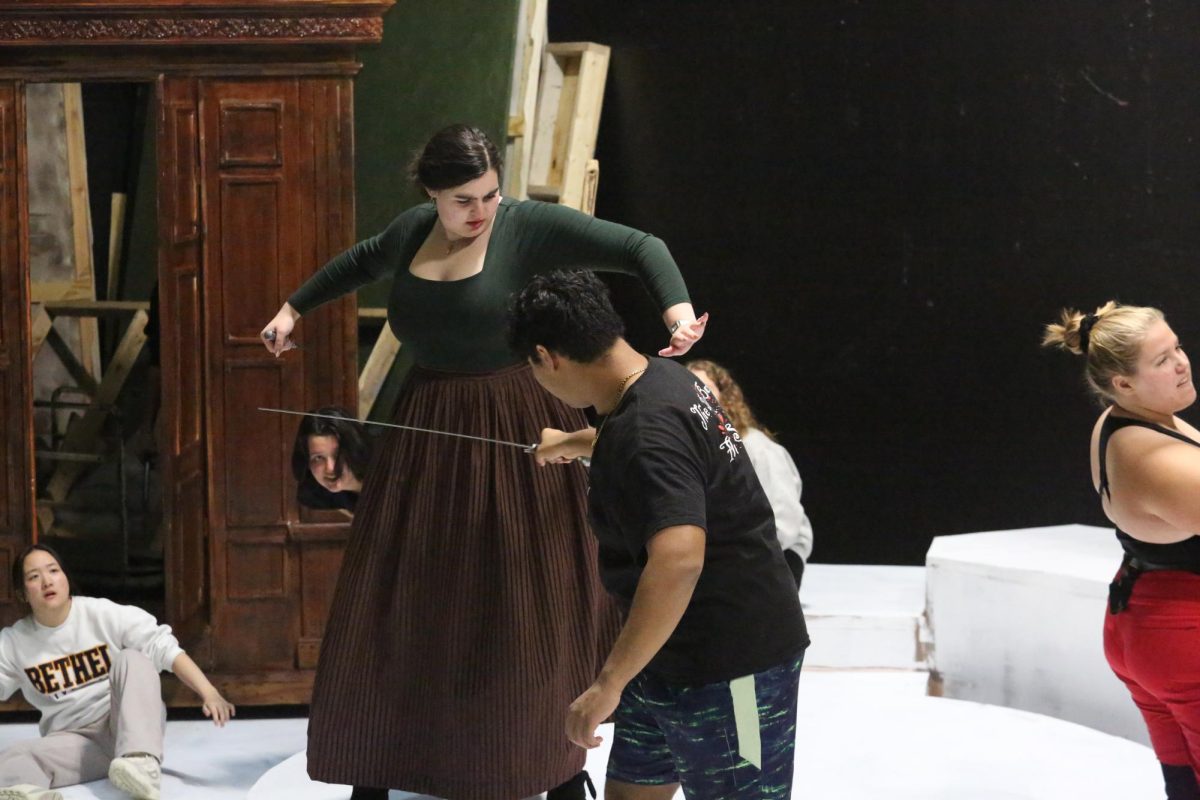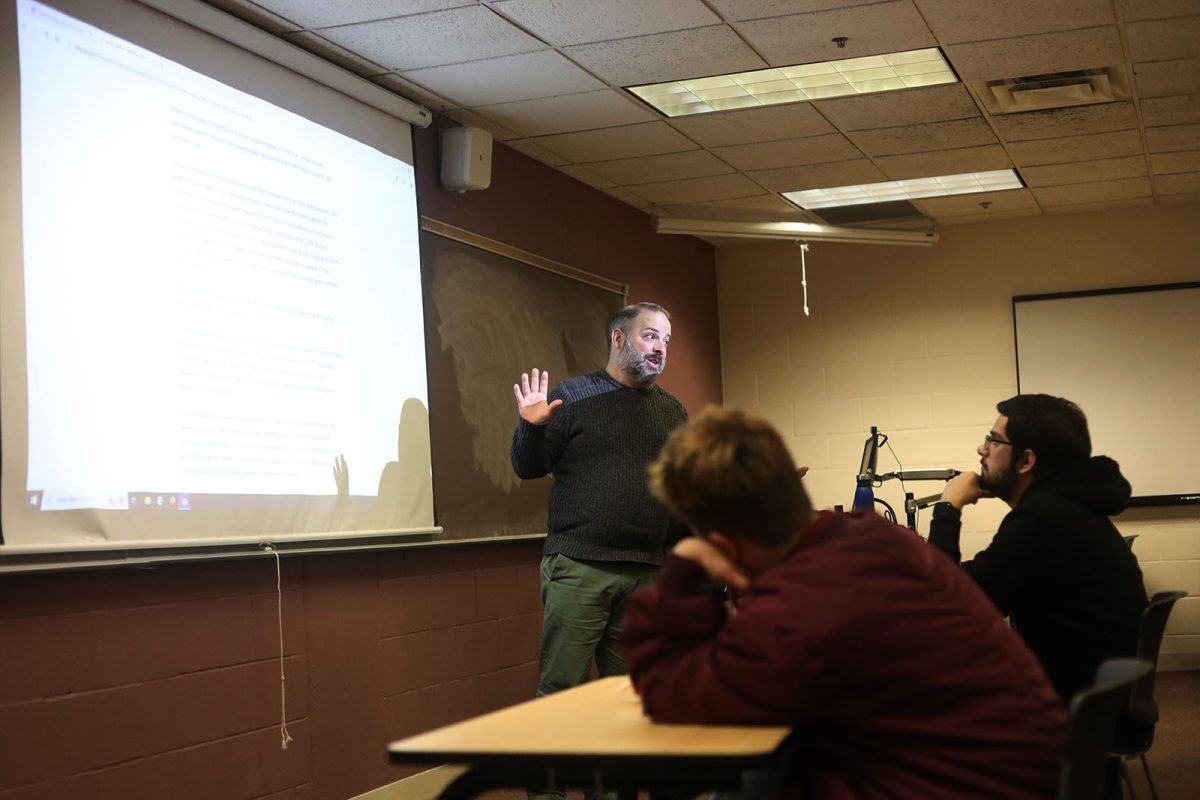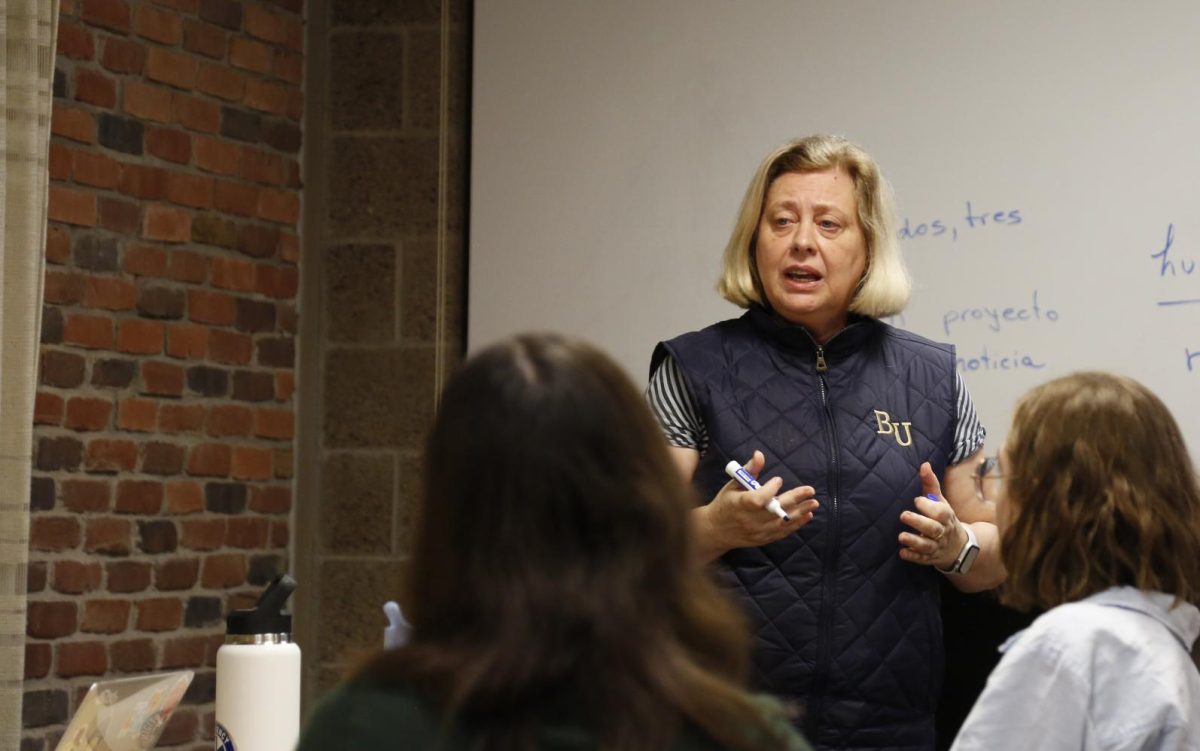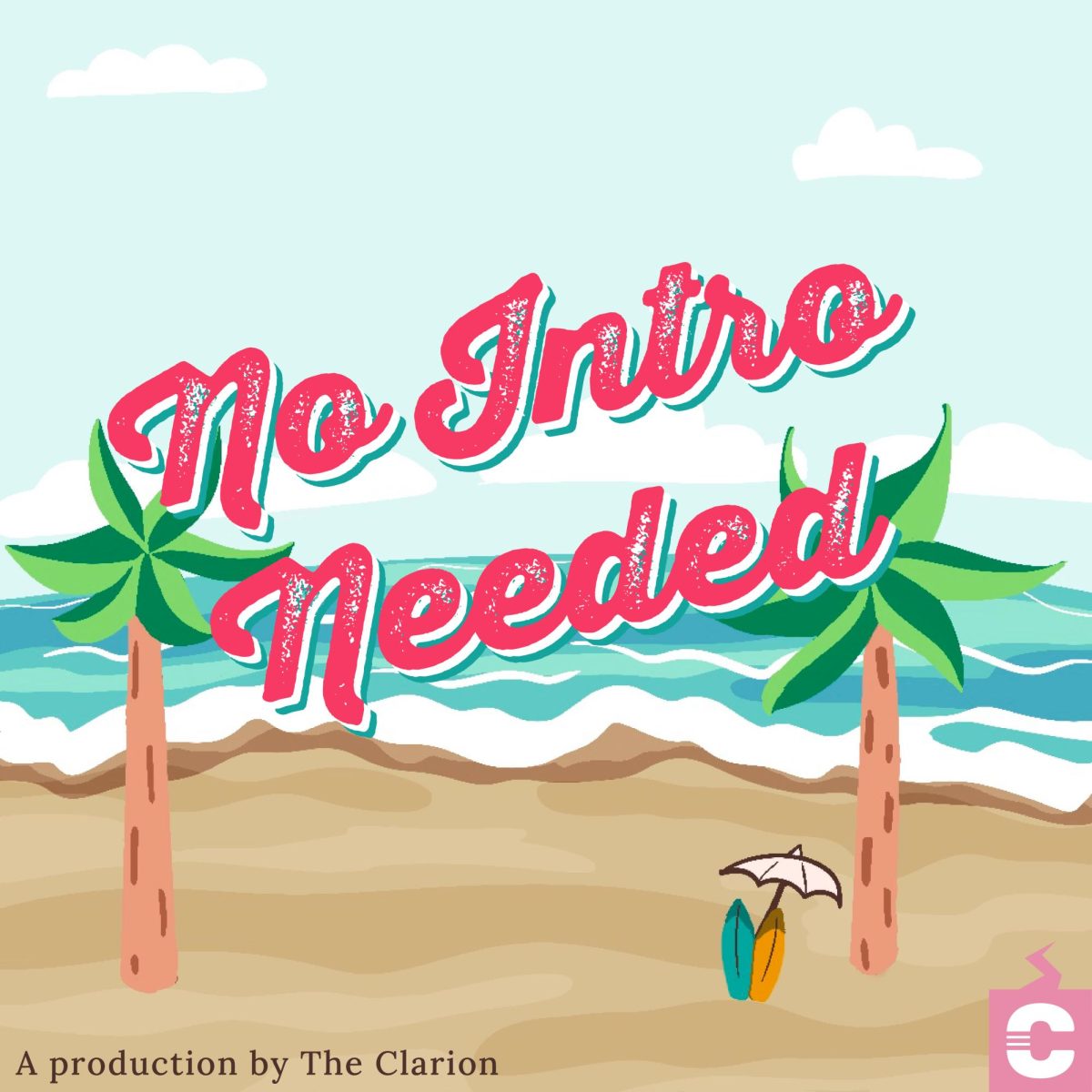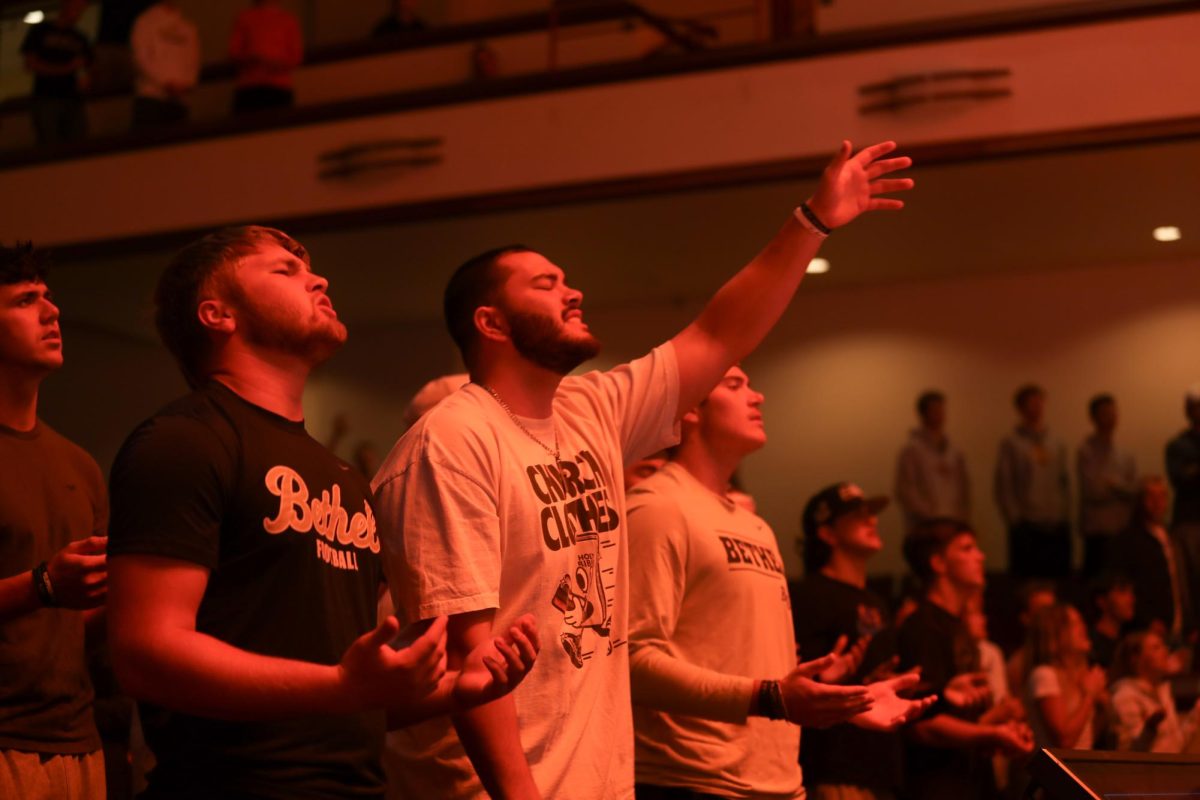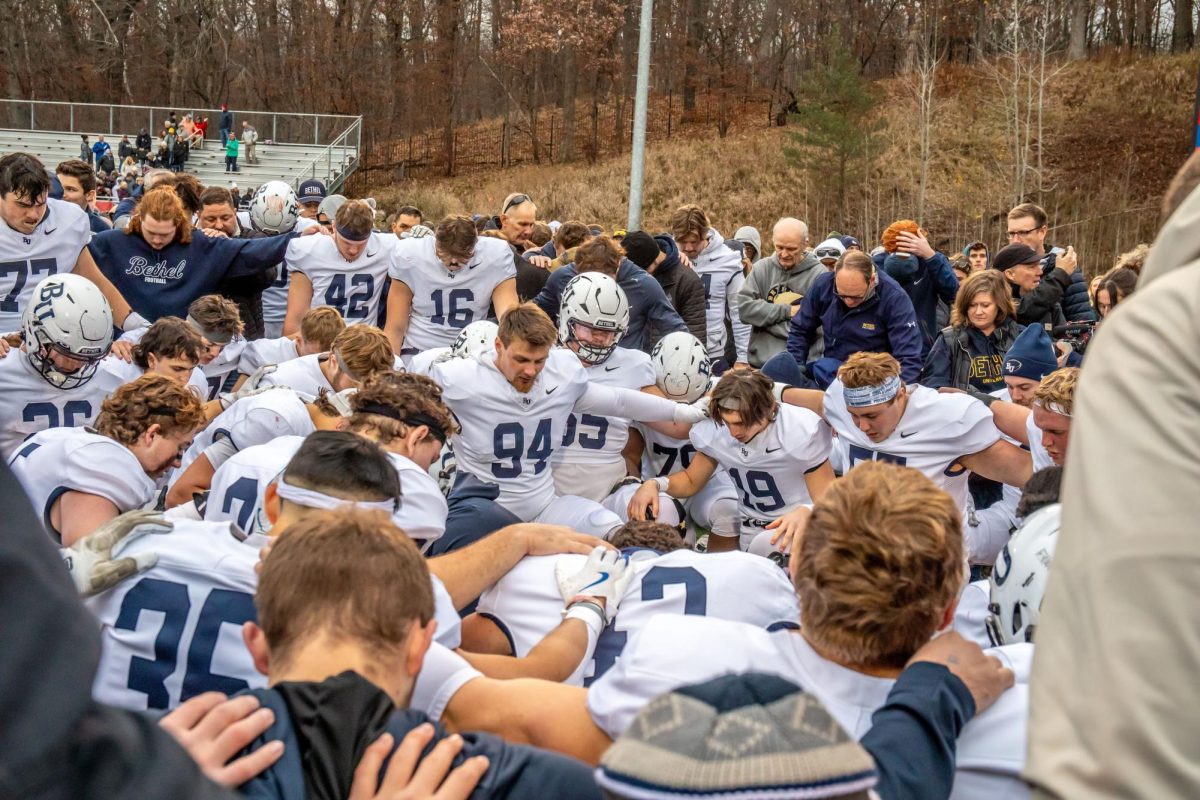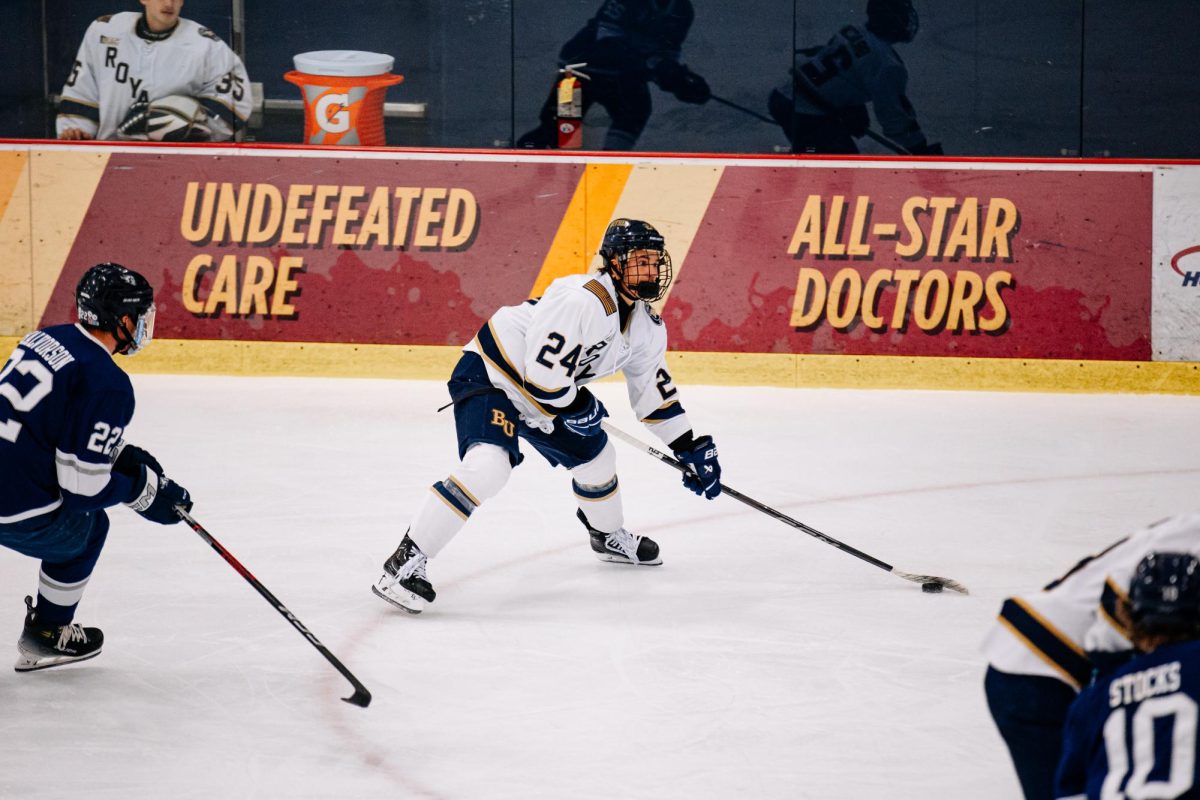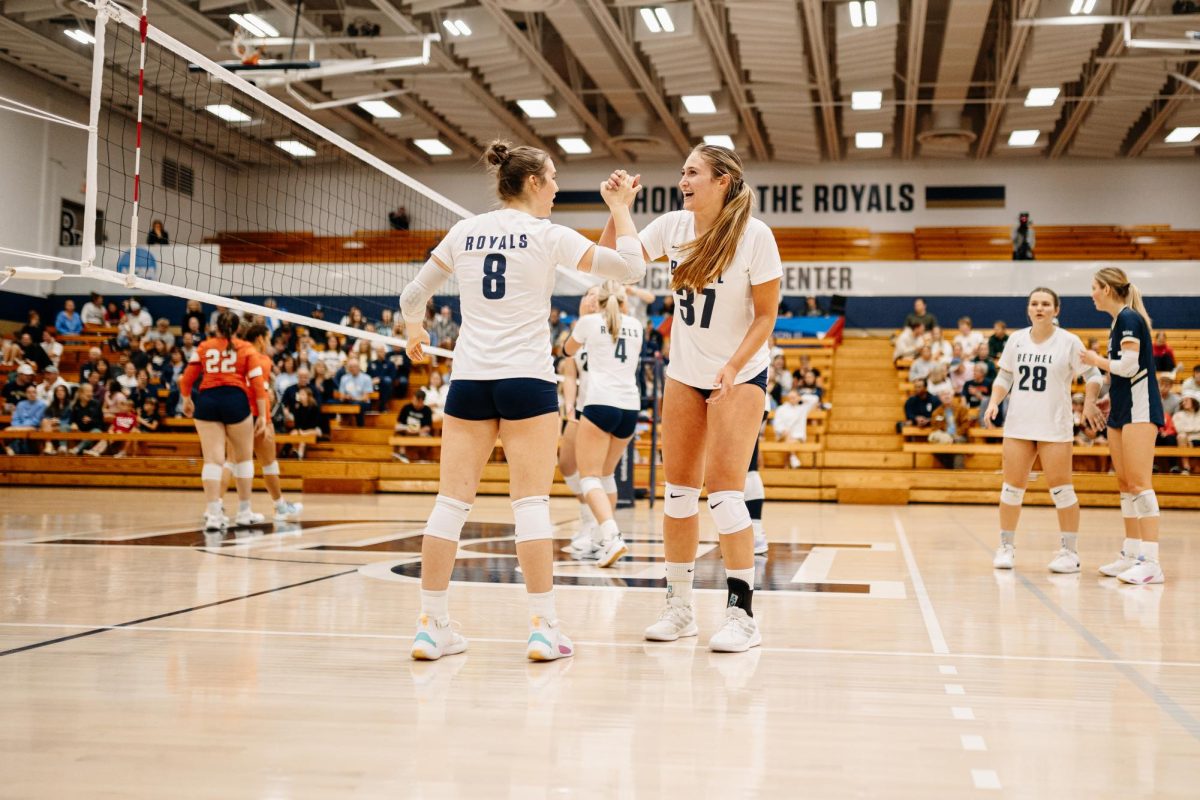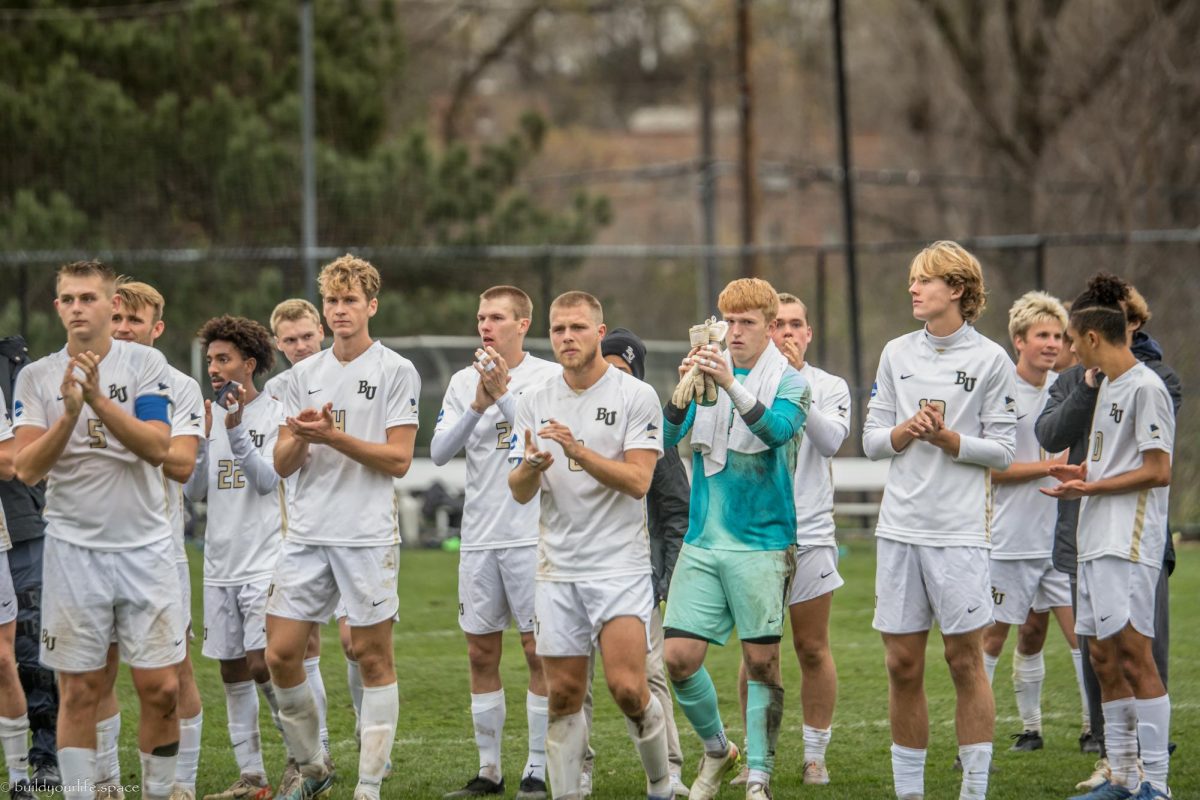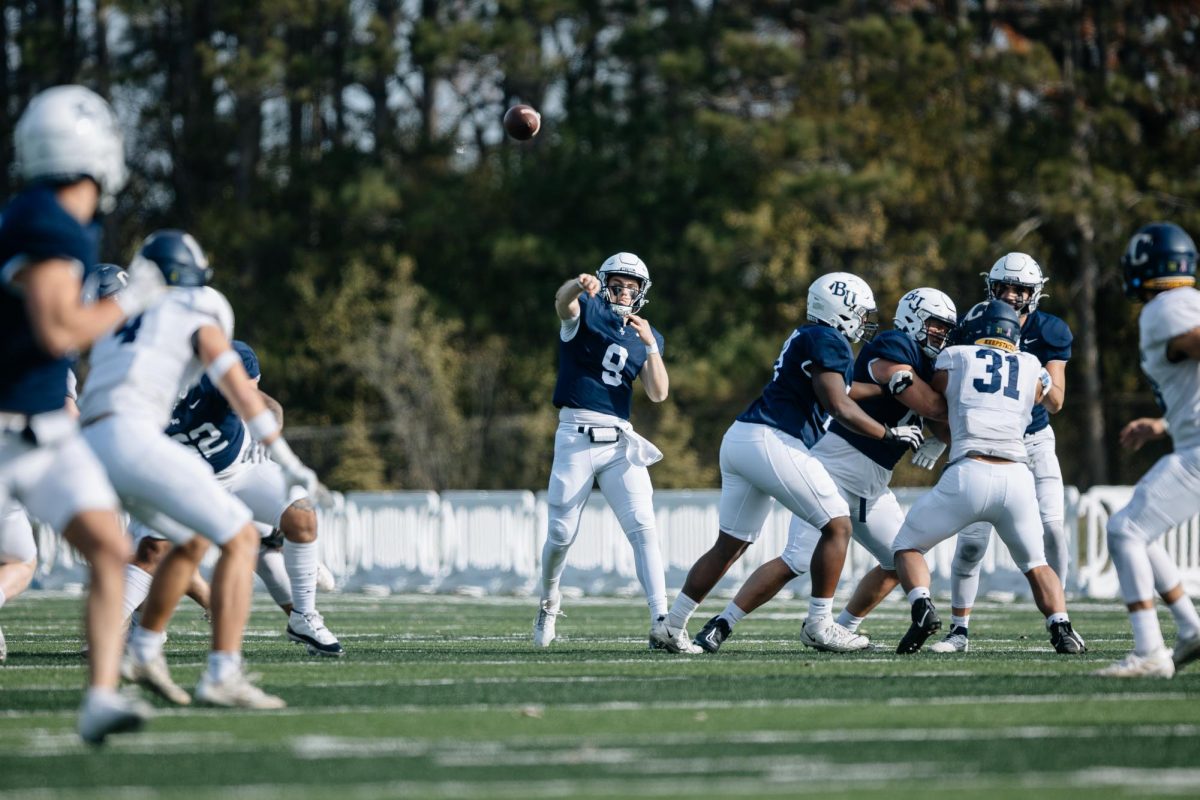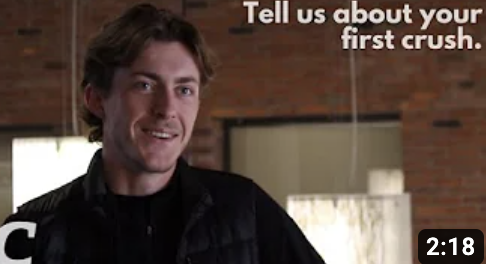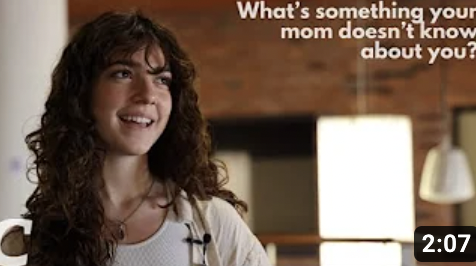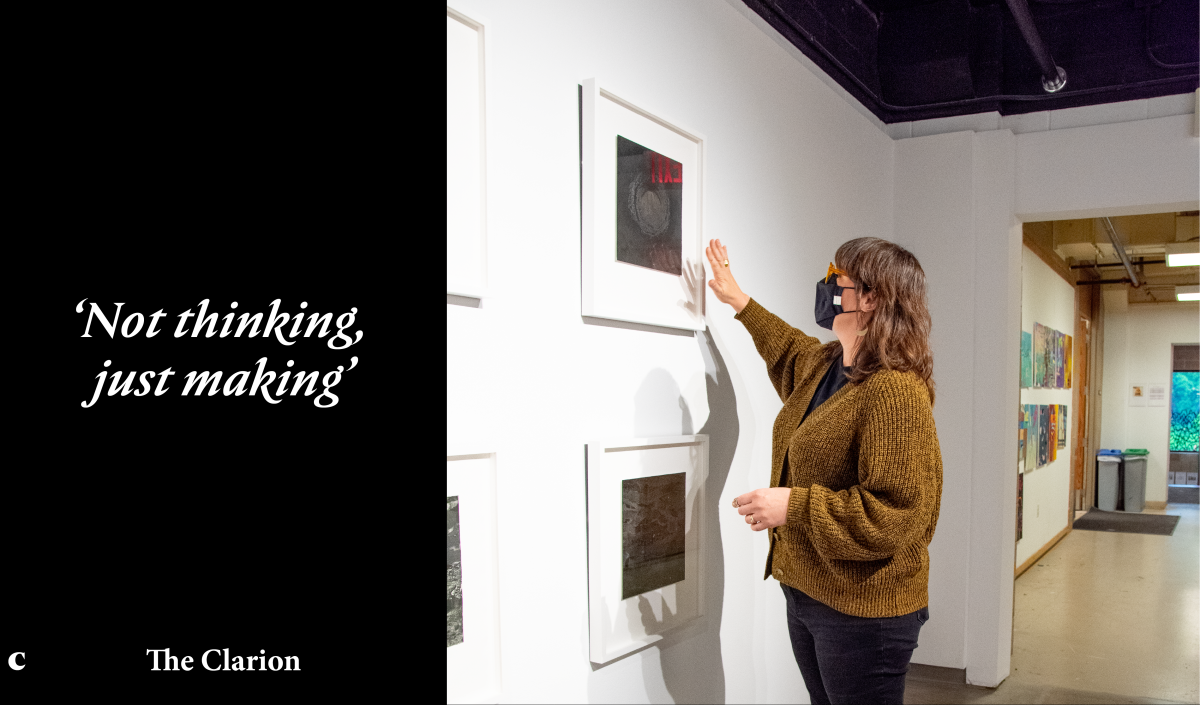It’s not only the students. Bethel art professors make stuff, too.
By Makenzi Johnson
Art ranging from patchwork quilts and digital screen prints to ceramic sculptures and acrylic paintings fill the Johnson Gallery. The Bethel Art Department staff and faculty have art on display in the Gallery until Dec. 10, showing that it’s not just the art students who make stuff.
“It’s so important to us that our students see that we are constantly making things,” Department Chair and Professor of Art Amanda Hamilton said. “I think one thing that’s a strength of our department is [that] the faculty really believe [that] if you’re going to be teaching, you need to be making and have your own rich process that you’re committed to.”
Amanda Hamilton, Art Department Chair and Professor of Art and Design

“I’m inking the surface of this painting with oil-based painting, like a printmaking process, and then printing it onto [a second piece of] paper. It’s the inverse of one to the other. I use a lot of natural materials like flake mica and sand in the paint. When [the natural material] gets printed, because it’s shiny, it wipes really clean. It’s kind of a negative, positive thing.”
“For many years in my work, [I’ve thought] about states of being, like presence and absence, materiality and immateriality … because the painting is the first thing that you make, [the screen print is] fully present, its own iteration, but it’s also dependent on the painting. I was interested in what printmakers call the second print — ghost prints – without really realizing that I had been thinking of [the screenprints] as ghost prints because they feel like they’re not as physically present as the painting.”
Lex Thompson, Professor of Art

“There was this guy, Waterhouse Hawkins, who made the Crystal Palace dinosaurs for a dinosaur museum in Central Park. [While] working on it, he made some comments about the New York City government. Boss Tweed, [a New York senator at the time], sent his men over in the night, and they demolished and disposed of the dinosaurs. There are three competing stories about where [the sculptures] may have ended up. What’s in the show [are] photographs from each of those locations: the umpire’s mound near the baseball fields, a location that is now the compost pile and Harlem Meer. The other thing [on display] is a tooth from the dinosaurs in Central Park.”
“No one has ever dug up the fragments. Various people [have wanted] to, and it’s never happened, so that’s why I’m interested. Plus, they’re just weird and fun, and everybody likes a good ‘government smashes a dinosaur and buries it in the park’ story.”

Krista Anderson-Larson, Adjunct Professor of Art

“Often the only truly private space that we get in our homes when we’re growing up is the bathroom because of rules that your bedroom door can’t be closed or that you have to share a room with a sibling. A lot of key developmental moments psychologically and sexually happened in the bathroom. My work plays on those moments by taking the bathroom furniture, since it’s so unique to that room, and pulling it into an art space where it’s not traditionally seen and anthropomorphizing the objects by putting them in uncomfortable proximity to each other.”
“I think it’s really important [to have my art on display]. That’s really the reason why I do this. It wouldn’t make sense to do it if no one was ever going to see it, so it’s an invaluable experience.”
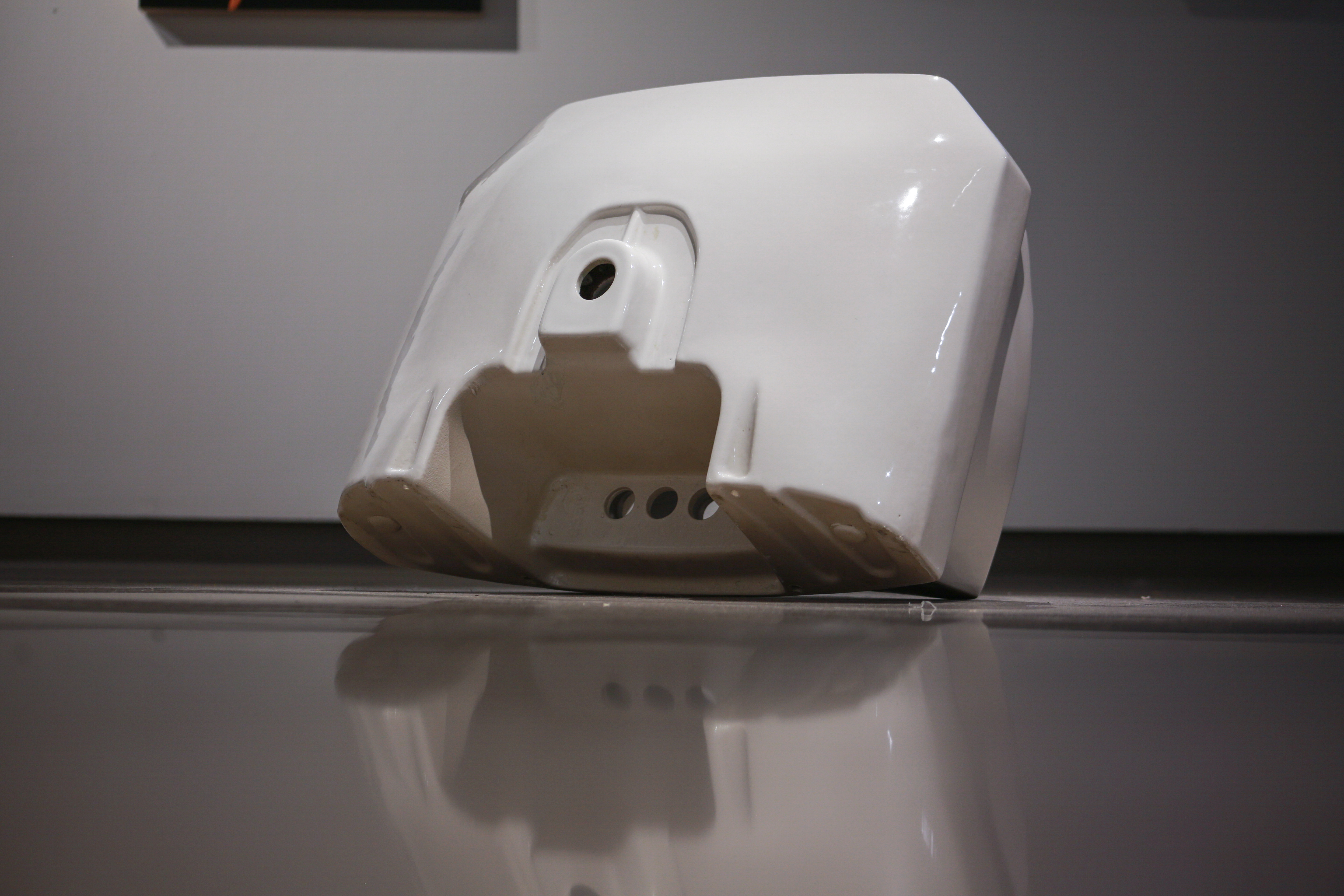
Jessica Henderson, Professor of Graphic Design

“Most of my work is some combination of design and screen printing or permitting techniques. I pull a lot from personal archives, whether they’re trash on your computer or photo archives. A lot of my work is about the tension that exists between digital spaces and analog spaces and thinking about the life that I live in the real world that I’ll have to live online or through my phone, and how that shapes relationships and my true understanding of myself. Some of this typography is actually Google Translate from trying to translate my kids’ Spanish homework. I work a lot with my kids, so a lot of the lines that are on here are from them or made in collaboration with them.”
“After an exhausting year, it was really lovely for my soul to just make something without thinking about things for a while. That was what I needed to do.”

Kenneth Steinbach, Professor of Art and Design

“There’s a pretty famous print from 1498 by Albrecht Dürer, [who was a] major medieval and Renaissance German artist. It’s sort of curious because it is about the Four Horsemen of the apocalypse. What Dürer is depicting here is a set of about 15 prints depicting the book of Revelation. I wanted to deal with this print in some way, so I went down to the Minneapolis Institute of Art and got permission [to view it]. They literally brought [the print] out with white gloves, and I took photographs pretty thoroughly.”
“Essentially, what I did was make a perfect copy of it. I did all this stuff to really capture it as closely as I could. I essentially made a version of it flipped around. And so instead of the Four Horsemen being set loose upon the world, I’m sending them back to hell. It’s a very personal kind of theological statement.”
